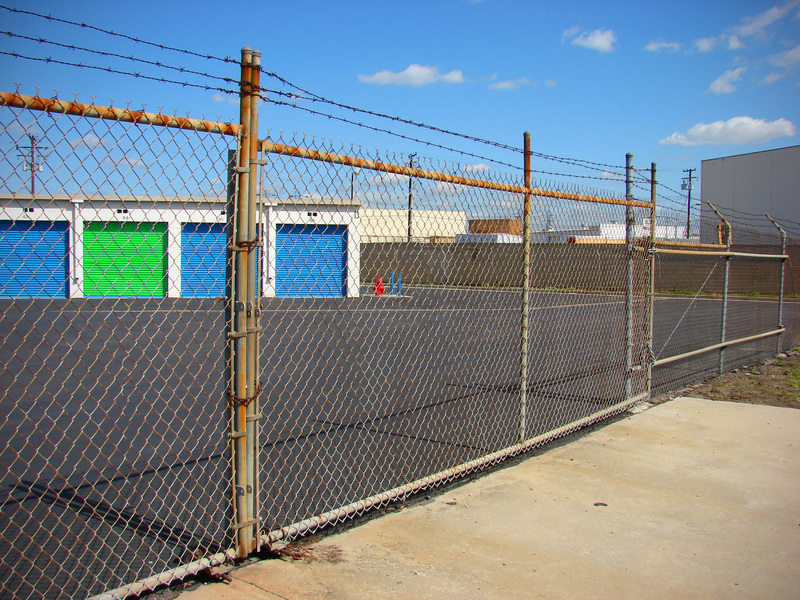Secure Your Freezer: Steps to Store Safely When Unused
Posted on 05/06/2025
Secure Your Freezer: Steps to Store Safely When Unused
A household freezer is an essential appliance, preserving food and keeping groceries safe for extended periods. But what happens when you need to leave your freezer unused for a while--maybe you're moving, redecorating, or simply don't have a need for it? Properly securing and storing a freezer when not in use is crucial to protect its longevity, prevent unpleasant odors, and safeguard against potential hazards. In this article, we'll walk through comprehensive, step-by-step guidance on how to store your freezer securely when it's unused, ensuring it remains in optimal condition for whenever you need it again.

Why Is Correct Freezer Storage Important?
Many overlook what happens to their appliances during periods of non-use. However, securing your freezer when not in service is vital for several reasons:
- Prevents mold and mildew: Closed, unused freezers can become breeding grounds for bacteria, mildew, and mold if not cleaned and ventilated properly.
- Eliminates foul odors: Residual moisture and leftover food particles can lead to strong, unpleasant smells.
- Deters pests: Vermin and insects may be attracted to food remnants or moisture left inside.
- Protects appliance lifespan: When stored incorrectly, internal components might corrode or suffer damage from dampness and lack of airflow.
- Ensures safety: Unsecured freezers can be a suffocation risk for children and pets.
Let's explore the **best practices for freezer storage** that minimize risks and maximize the potential lifespan of your appliance.
Step-by-Step Guide: How to Safely Store a Freezer When Unused
1. Prepare Your Freezer
Before you can move or store your freezer, you need to ensure it's clean and empty. This step is crucial for both hygiene and safety.
- Remove all food: Take out every food item, including ice trays and freezer packs. This minimizes spills, stains, and food spoilage.
- Switch off and unplug: Unplug your freezer from the outlet. If your model has a power switch, turn it off as well.
Tip: Defrost your freezer at least 24 hours before moving or storing. This allows any ice buildup to melt naturally and makes cleaning easier.
2. Defrost Your Freezer
Most experts recommend fully defrosting the freezer before extended storage to prevent water leakage and mold growth.
- Open the freezer door to let the ice melt. Place towels around the base to absorb water as it trickles out.
- Speed up defrosting by placing bowls of hot (not boiling) water inside and shutting the door. The steam will hasten ice melt.
- NEVER attempt to chip away thick ice with sharp objects--this can damage the lining or coolant system.
When all ice is cleared, dry the interior completely using clean towels and let it air out for a few hours. This will illuminate any hidden moisture.
3. Perform a Thorough Cleaning
A spotless freezer means no odor or mold when you re-open it. Deep clean both the interior and exterior surfaces:
- Mix a solution of two tablespoons baking soda per quart of warm water. Never use bleach or abrasives unless directed by your manufacturer.
- Wipe every shelf, drawer, and gasket, paying close attention to corners and seams.
- Wash removable parts (like trays and bins) separately in warm soapy water.
- Dry thoroughly before reassembly.
Don't forget the exterior. Dust or vacuum the compressor coils (often found at the back or underneath the freezer) to prevent operational issues later.
4. Odor-Proofing Measures
An unused freezer can develop a musty smell if stagnant air is trapped inside. To keep it smelling fresh:
- Place an *open box of baking soda* or activated charcoal inside. These absorb residual odors and moisture.
- For a natural freshener, a sachet of dried coffee grounds or a few cotton balls soaked in vanilla extract works wonders.
Do not use commercial air fresheners inside the freezer, as their chemical residues can linger and taint food upon reuse.
5. Dry and Air Out the Freezer
Moisture is a primary enemy when storing your freezer. Allow the appliance to air dry thoroughly for several hours--even overnight--before closing the door or sealing it.
- Prop open the door with a rolled-up towel, wooden spoon, or manufacturer-supplied spacer.
- Never leave a closed, unplugged freezer for long periods.
This proactive step helps avoid condensation, mold, and mildew.
6. Safe Storage Preparation
If you're storing your freezer in another location or garage:
- Keep upright: Transport and store the freezer in an upright position to prevent coolant fluid from shifting inside the compressor. Laying it flat can cause irreparable damage.
- Choose a clean, dry location: Avoid areas prone to flooding or temperature extremes.
- Avoid direct sunlight: Prolonged sun exposure can warp seals and plastic surfaces.
- Protect wiring: Secure loose cables and tape plugs safely to prevent tripping or rubbing.
7. Door Security and Child Safety
An unused freezer must never become a safety hazard, especially if you have children or pets. Child proofing is essential:
- Secure the door: Use a strong bungee cord, rope, or manufacturer's lock to keep the door propped open several inches. Many brands offer optional 'storage spacers' or latches for this purpose.
- Mark and educate: If stored in shared spaces, label the freezer as "Not In Use - Do Not Close Door" as a precaution.
- Install ventilation: If feasible, leave a few small ventilation holes (check manufacturer guidelines) or place the freezer where airflow is good.
8. Maintenance Tips for Long-Term Storage
A freezer in storage isn't entirely "set and forget." To keep it in prime shape:
- Inspect quarterly: Check for dust, pests, and moisture buildup, especially in humid environments.
- Re-clean as needed: Wipe interiors and exteriors if any mold or dirt appears.
- Avoid heavy stacking: Don't store weighty items on top that could warp the freezer's frame or lid.
- Check electric cords: Ensure wiring and plugs are not cracked or frayed by movement or rodents.
If possible, run the freezer briefly every 3-4 months. This helps move coolant fluid and keeps the internal parts lubricated, especially for older freezers.
Expert FAQ: Freezer Storage and Safety
Is it OK to leave my freezer unplugged for months?
Yes, provided you've emptied, defrosted, cleaned, and dried it thoroughly. Always prop the door open and store it in a dry area.
Can I store my freezer in a cold garage or outdoors?
You can store freezers in a garage if the temperatures do not drop below freezing or soar extremely high. Extreme cold may damage internal lubricants and plastics, while heat can degrade seals and cause condensation.
What is the fastest way to remove odors from a stored freezer?
Use baking soda or activated charcoal. If strong smells linger, place crumpled newspapers inside for several days--these can help absorb stubborn odors.
Do I need to cover my unused freezer?
While not essential, covering your freezer with a breathable dust sheet or tarp prevents grime buildup. Avoid plastic wraps--they trap moisture and may cause mold.
How do I restart my freezer after storage?
Remove any odor absorbers, close the door firmly, and plug the freezer in. Wait at least 2-3 hours for temperatures to stabilize before adding food.
Environmental Considerations When Storing Freezers
Properly securing and storing a freezer isn't just about your appliance--it's also about the environment. Here are some key considerations:
- Avoid refrigerant leaks: Ensure your freezer is not physically damaged, as leaking coolant can be hazardous. Report leaks to professional service providers.
- Responsible disposal: If your unused freezer is destined for retirement, arrange for eco-friendly disposal or recycling via local waste management services.
- Reduce energy consumption: An unplugged and properly stored freezer consumes no power, lowering both your utility bills and carbon footprint.

Common Mistakes to Avoid When Storing a Freezer
- Leaving the door shut: This almost always leads to foul odors and mold growth.
- Not cleaning thoroughly: Food residue and moisture combine to create nasty surprises later.
- Storing in damp environments: Moisture buildup can lead to corrosion and electrical faults.
- Forgetting to check periodically: Out of sight shouldn't mean out of mind. Routine checks are essential.
Conclusion: Keep Your Freezer Safe for the Long Haul
Whether you're storing your freezer for a few weeks or several months, following the right steps to secure your freezer when unused is vital. These precautions prevent costly repairs, health risks, and unpleasant surprises when it's finally time to plug in and use your appliance again. Remember, a few moments of careful preparation can add years to your freezer's service life and keep your home safer and cleaner.
Key Takeaways:
- Always clean, defrost, and dry your freezer thoroughly before storage.
- Keep the door propped open and use odor absorbers like baking soda.
- Store in a dry, safe place away from direct sun and extreme temperatures.
- Periodically check for pests, damage, and cleanliness.
- Educate family members about child safety with unused freezers.
With these freezer storage solutions, your appliance will be in perfect condition--whether it's unused for months or brought back to life at short notice.
Secure your freezer safely, and enjoy peace of mind!
